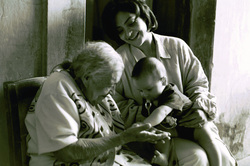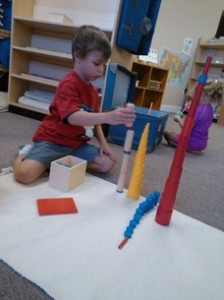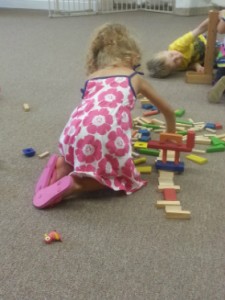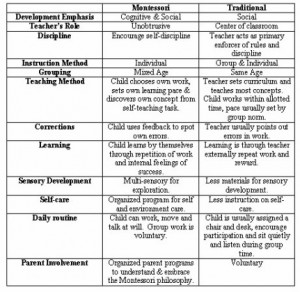 How many lives do you live? When do you sleep? These are the questions I usually hear when people learn that I combine my preschool mornings with the care of the elderly in the evenings and weekends. Luckily, I live many lives; and I sleep so soundly –because I’m exhausted- that I don’t need much.
How many lives do you live? When do you sleep? These are the questions I usually hear when people learn that I combine my preschool mornings with the care of the elderly in the evenings and weekends. Luckily, I live many lives; and I sleep so soundly –because I’m exhausted- that I don’t need much.
Somehow, my seemingly opposite worlds have always made sense to me as they seamlessly flow unto each other, touching more than separating, and blending into one beautiful continuous and infinite line, a true circle of life.
I discovered Montessori as a child, at about the same time that I discovered the calm and incredibly sound minds of my grand-aunts, who lived the simplest of lives. With them, I discovered peace and order in the sorting of the beans and the cleaning of the lentils, I found logic in the endless counting of their Rosary beads, and my first arithmetic exercises were the well accounted exchange of heavenly graces for each offered prayer. In their house, “Practical Life” was Plain Life finding the present moment with its duties and labors. Washing dishes, sorting laundry, dusting, sweeping, cleaning bird cages, watering flowers, planting seeds, tending the orchard, natural science presenting itself in its original scenario; earth, water, sun, moon and stars the producers and screenwriters.
My grand-aunts lived past their mid-90s, and I had the privilege of sitting with them – and my son- many afternoons to reminisce, their wisdom and memories untouched by time, preserved by their devotion to the here and now, the task at hand, the joy of each and every moment.
As the years went by, I realized that work in my Montessori classroom with my preschoolers, resembled not only the lesson but the wisdom of my elderly grand-aunts. Finally, when I started working with the elderly, particularly those who were struggling with memory issues or dementia, I started bringing the Montessori Casa Dei Bambini to them. They’ve helped me prepare materials for the children, we’ve played the snake game and the bank game; we’ve written labels and remembered words , and we’ve stringed bead after bead, counting, while we searched for the memory, the name, or the face that each single bead stood for.
This weekend, while browsing for a book to better serve both my children and my elder, I found the amazing work of Karen and Tom Brenner, You Say Goodbye and We Say Hello: The Montessori Method for Positive Dementia Care. The book is available through Amazon (link above) or at Barnes and Noble. Also, please check the lovely -and loving- blog The Movable Alphabet of Susan Dyer, a Montessori Theorist and former primary classroom teacher now working with the elderly.
I share this with you all now because I’ve been fortunate enough to meet, teach and care up to four generations of some families. I love my children, and their parents and grandparents. I know that eventually, children will become parents, and in many cases, parents of their parents. In that knowledge and spirit, I’ve made a point of making my Montessori classroom and teaching more than a method to transmit information or academic and scholar knowledge. I somewhere read a quote attributed to Theodore Roosevelt : Old age is like everything else. To make a success of it, you’ve got to start young. I’ll be more than happy to help with this!
Have a wonderful here and now and keep the memories intact. Love, V.


